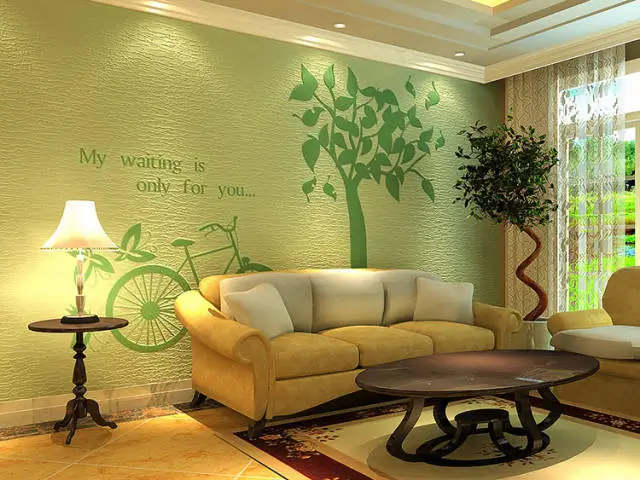As environmental concerns continue to grow, homeowners are increasingly looking for ways to renovate their homes in an eco-friendly manner. Sustainable home upgrades not only help reduce the environmental footprint but also enhance the aesthetic appeal and long-term functionality of the living space. This article explores how to achieve beauty and sustainability through eco-friendly home remodeling practices.
Home Renovation: Prioritize Energy Efficiency
One of the most important aspects of eco-friendly home renovation is improving energy efficiency. By reducing energy consumption, homeowners can lower their carbon footprint and save on utility bills.
- Insulation and Sealing: Proper insulation is a key element in reducing energy usage. Adding or upgrading insulation in walls, attics, and floors helps maintain a consistent indoor temperature, reducing the need for heating and cooling. Sealing gaps and cracks around windows, doors, and ducts prevents heat from escaping and improves overall efficiency.
- Energy-Efficient Appliances: Replace old, inefficient appliances with energy-efficient models that consume less power while performing the same tasks. Look for products that are ENERGY STAR certified for guaranteed efficiency.
- LED Lighting: Switching to LED bulbs significantly reduces energy consumption compared to incandescent or CFL bulbs. These lights also have a longer lifespan, making them more cost-effective in the long run.

Use Sustainable Materials
Choosing sustainable building materials is another essential step in an eco-friendly home renovation. Opt for materials that are renewable, recyclable, or have minimal environmental impact.
- Bamboo: Bamboo is a highly sustainable material for flooring, furniture, and even cabinetry. It grows quickly and requires little maintenance, making it an excellent alternative to traditional hardwood.
- Recycled Materials: Reclaimed wood, recycled glass, and repurposed metal can be used in various aspects of home remodeling. These materials reduce waste and give your home a unique, rustic charm.
- Low-VOC Paints: Volatile Organic Compounds (VOCs) found in many paints can negatively impact indoor air quality. Choose low-VOC or no-VOC paints to create a healthier living environment while still achieving beautiful, vibrant finishes.
- Natural Stone and Concrete: Sustainable stone and concrete materials, such as recycled stone or locally sourced limestone, are durable, long-lasting, and eco-friendly alternatives to traditional building materials.
Maximize Natural Light
Using natural light to brighten your home not only reduces the need for artificial lighting but also contributes to the overall energy efficiency of your space. During your renovation, consider the following strategies:
- Install Larger Windows: Larger windows or glass doors can allow more sunlight into your home, reducing the need for electricity during the day.
- Skylights and Light Tubes: Skylights and light tubes are excellent ways to bring natural light into rooms that may not have exterior windows. These features can dramatically reduce the reliance on electric lighting.
- Reflective Surfaces: Use light-colored paint, mirrors, or reflective surfaces to bounce natural light deeper into rooms, making them feel brighter and more inviting.
Water Conservation
Water usage is another critical area to address in an eco-friendly home renovation. By incorporating water-saving technologies, homeowners can reduce consumption while still maintaining the functionality of their home.
- Low-Flow Fixtures: Install low-flow toilets, faucets, and showerheads to significantly reduce water usage without sacrificing performance.
- Rainwater Harvesting: Consider installing a rainwater harvesting system to collect rainwater for non-potable uses, such as irrigation or toilet flushing. This can reduce the demand for municipal water and lower utility bills.
- Water-Efficient Landscaping: Choose native plants that require minimal watering and are well-suited to your local climate. Xeriscaping, or drought-resistant landscaping, can create beautiful outdoor spaces while conserving water.

Home Renovation: Sustainable Waste Management
Waste reduction should be a primary consideration during a home improvement. From demolition to construction, managing waste effectively can significantly reduce the environmental impact of your project.
- Recycling and Reuse: Recycle construction debris, such as metal, wood, and plastic, and repurpose materials whenever possible. Donating or selling used furniture, fixtures, or appliances keeps them out of landfills and gives them a second life.
- Deconstruction vs. Demolition: Rather than demolishing your old structures, consider deconstructing them. This allows you to salvage materials for reuse or recycling and minimizes the amount of waste sent to landfills.
- Composting: If you have a garden, composting kitchen scraps, yard waste, and organic materials can help reduce landfill waste while providing valuable nutrients for your plants.
Home Renovation: Incorporate Smart Technology
Smart home technology can enhance sustainability by optimizing energy and resource usage. These devices not only make life more convenient but also contribute to a greener living environment.
- Smart Thermostats: Install a smart thermostat that automatically adjusts the temperature based on your daily schedule, helping reduce energy consumption and costs.
- Smart Lighting: Use smart lighting systems that can be controlled remotely or set to turn off when not in use. Motion sensors and timers can also help ensure lights are only on when needed.
- Energy Monitoring: Smart energy meters and appliances allow you to track and manage your home’s energy consumption, helping you identify areas for improvement and reduce waste.

Eco-Friendly Landscaping
Eco-friendly landscaping not only enhances the beauty of your home but also reduces environmental impact. Sustainable landscaping can improve energy efficiency, conserve water, and provide habitats for local wildlife. Although green home renovation doesn’t make up a large proportion of home renovations.
- Native Plants: Use plants native to your region, as they are better suited to local conditions and require less water and maintenance.
- Permeable Paving: Instead of traditional concrete or asphalt, consider permeable paving materials for your driveway or patio. These materials allow rainwater to seep through and replenish groundwater, reducing runoff and water pollution.
- Green Roofs and Walls: Green roofs and living walls are innovative ways to reduce energy consumption by providing natural insulation and improving air quality.
Conclusion
Eco-friendly home improvement is an investment in both your home and the planet. By prioritizing energy efficiency, using sustainable materials, incorporating water-saving technologies, and embracing innovative solutions, homeowners can create beautiful, functional spaces that are kind to the environment. As green renovation practices continue to evolve, the potential for creating sustainable, stylish homes is limitless. With the right approach, you can achieve a home that is not only beautiful but also sustainable for years to come.